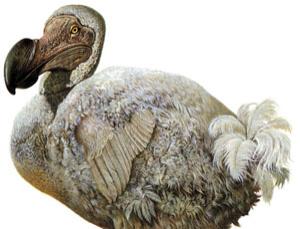'The successful man is the one who finds out what is the matter with his business before his competitors do.' - Roy L. Smith
There is a danger that many hospitality business owners believe they know everything there is to know about their business, based on what they like themselves. They have never conducted a thorough analysis of their customers, competition or the market. This they perceive to be an unnecessary waste of time and expense. The only trouble with that view is that the hospitality industry is constantly evolving, so without keeping up with the changes, they could eventually become extinct!
 |
| Don't become a hospitality Dodo! |
In our previous article - 'FIVE YEAR PLAN' (Part two in the series on Improving performance and achieving success in hospitality), we examined developing a marketing plan and marketing strategy. Here, we will delve into the analytical detail required by a business, in order to provide the data upon which important decisions can be based.
Competitor Analysis
Conducting a competitor analysis is an essential part of your five year plan. It will help you make strategic comparisons between competing businesses on critical success factors, assess your direct competitors and allow you to use the results to make future planning initiatives to change or enhance performance.
It has never been easier to find out everything there is to know about your competitors. Internet search engines, social media and review sites have opened up a new world of knowledge. We can gain an in-depth understanding of our competitors' pricing, menus, accommodation, facilities, target audience, quality of product, staffing, customer engagement, marketing initiatives; in fact, everything you need to prepare a complete picture of who and what you are competing against.
Review sites especially have opened up a once private window into a business. Now, everybody can see our dirty laundry hanging on the line. Guests and diners are willing and able to cut through the rhetoric and give their frank and honest assessments in graphic detail (photos, videos and all!). There might be the odd exaggerated claim, but the consensus of the many doesn't lie.
Firstly, produce an analysis sheet and consider the following:
- List your competitors
(If you think competition in the UK is tough, consider China. The Chinese market is expected to overtake the USA as the worlds largest by 2025 with an estimate of 6.1 million hotel rooms climbing to 9.1 million by 2039.)
Once the list is compiled, highlight those competitors that will prove the greatest challenge.
- List the items for comparison
Identify what you want to compare against. For instance consider the premises; location, appearance, parking and décor etc. The product offering; breakfast, lunch, dinner, specials board, bar menu etc. The accommodation; facilities, WiFi, satellite TV, iPhone chargers, courtesy tray and mini-bar etc.
- List marketing activity
Review websites, social media platforms, signage, press releases, newsletters and publications etc.
- List service standards
- Assess your business
Once you have completed your list, rate your own business. Consider employing a secret shopper to assess your operation but above all, be honest. Looking at your own company's performance and standards can be very revealing. This will create a benchmark against which you can identify the gaps.

Customer Analysis
Actually, potential customers do provide some clues. We can judge them on gender, what they wear, how they talk, by their buying habits and how they communicate. These are accurate signs but it's a really expensive business trying to find them by mass media advertising to the general population.
Therefore, you need to segment your customers into groups to initiate a targeted approach to your marketing activity. Once identified, you will better know what services matter to those guests, what to offer them, how to reach them and identify opportunities to attract more of them.

There are generally four ways to segment the market:
- Geographic (rural, city, local, national, international etc.)
- Behavioural (new or loyal guest, negative or positive attitude, status etc.)
- Psychographic (personality, lifestyle, values, interests etc.)
- Demographic (age, gender, family, occupation etc.)
.....and four main customer segments to consider:
- Individual leisure guests
- Group leisure guests (tours, weddings, functions etc.)
- Individual business guests
- Group business guests (meetings, conferences, training etc.)
Customer segmentation therefore allows you to use the right media, with the right message to reach the right person(s) in the most cost effective way.
S.W.O.T Analysis
The final piece of the analysis jigsaw for your five year plan, and a key contributor to the competitor and customer evaluation, is to conduct a S.W.O.T. analysis.

- Strengths - exploit, publicise and design your offers around your strengths.
- Weaknesses - identify, minimise and overcome your weaknesses.
- Opportunities - evaluate and use as a basis for future action.
- Threats - draw up contingency plans to challenge and overcome the threats.
Who compiles your SWOT analysis?
We at Hospitality Skills believe the whole management team should be involved in this process. The more contributions, the more dynamic the conclusions. Each will bring a different perspective to the table and often provide very useful submissions.
Next time....Part 4 - We'll examine the next elements of your five year plan for 'Improving performance and achieving success in hospitality'.
For further information about Hospitality Skills and our services please contact us here:
David Allen
Co-Owner Hospitality Skills
www.HospitalitySkills.org
In addition, we would welcome you to join the Hospitality Skills Group on LinkedIn where we share best practise in hospitality and would value your input.
Join here: HOSPITALITY SKILLS GROUP


No comments:
Post a Comment